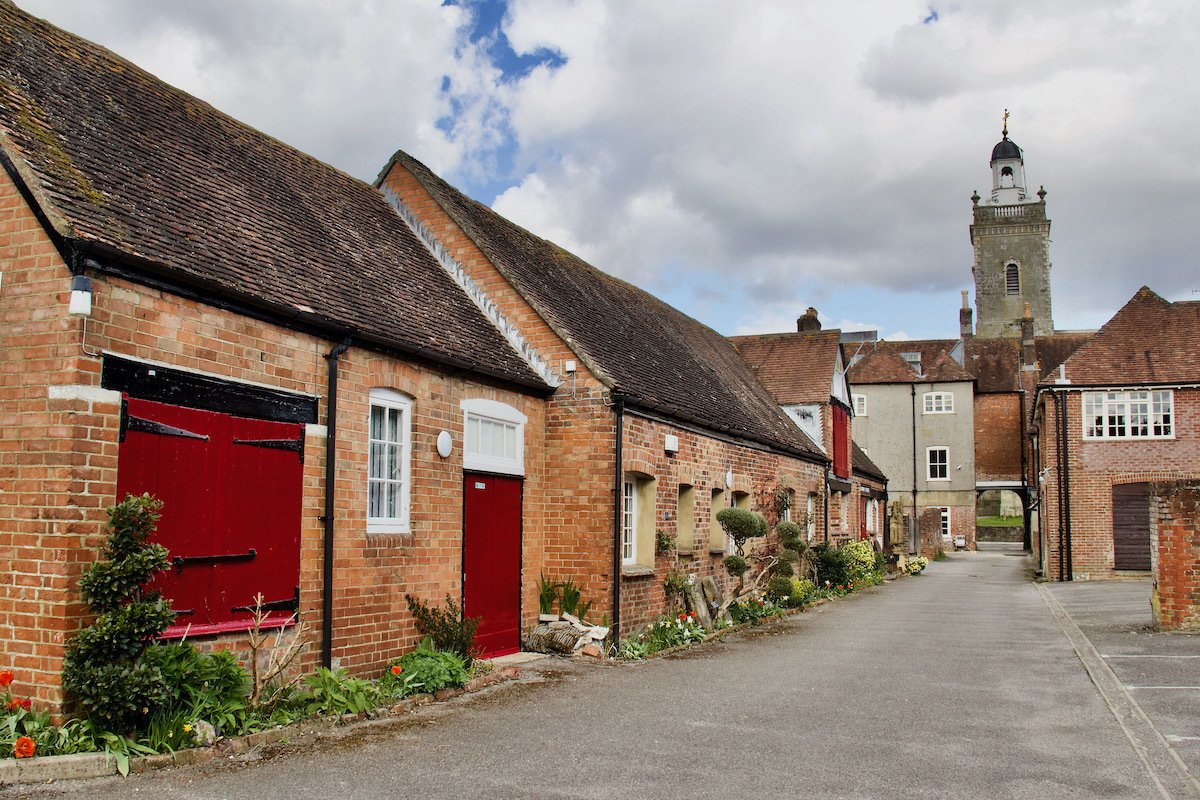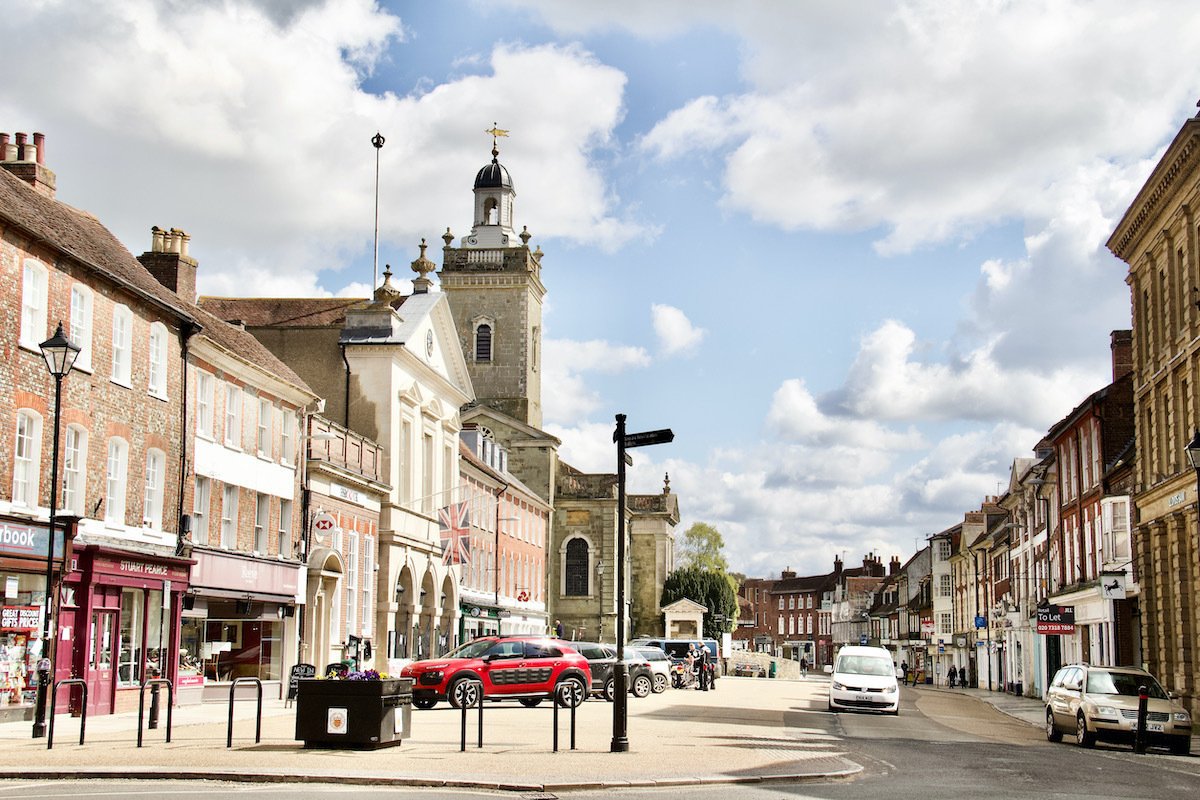
Blandford Forum is a pretty market town on the River Stour in the depths of the Dorset countryside. Visitors will be enchanted by its unique Georgian market-place and fascinated by the story of how the town recovered from a disastrous fire in 1731, which destroyed 90 per cent of the old town. An unusual chain of circumstances resulted in a magnificent restoration of Blandford Forum largely due to two local brothers: architects, surveyors and builders, William and John B’stard (more commonly and erroneously written Bastard).
A Very Short History of Blandford Forum
The original settlement was established on an Anglo-Saxon fording point of the River Stour. It was recorded in the Domesday Book as Blaen-y-ford or Blaneford, the place near a ford. Subsequent records refer to the town as Blandford Forum incorporating forum, a Latin word meaning market. During the thirteenth century it had developed into an important market town with access over a bridge across the River Stour. By the 14th century its market was one of the most important in Dorset and the town was represented by two members of Parliament. The fame of Blandford’s markets and fairs began to attract wealthy residents. During the 16th, 17th and early 18th centuries serious fires destroyed some parts of this prosperous town. But it was the Great Fire of 1731 that destroyed the medieval town centre.
The Great Fire of Blandford Forum
For many in the English county of Dorset, reference to ‘The Great Fire’ has nothing to do with the Great Fire of London but rather the Great Fire of Blandford in 1731. At the time the town was embroiled in a smallpox epidemic and it was considered an extreme divine intervention. The fire began on a warm June afternoon in the workshop of a tallow chandler (candle maker). The King’s Arms now occupies the site of the workshop on the corner of White Cliff Mill Street and Bryanston Street. An apprentice was boiling some soap but had built too big a fire in the furnace. He tried to rake away some of the burning fuel from the mouth of the furnace, but the embers set fire to the furzes stored by the furnace and the workshop was soon ablaze. Fanned by the wind, the fire spread so quickly that within an hour it had spread through the town. Over four hundred families lost their homes, but only twelve people are known to have died in the fire. However, this is a conservative estimate as all the church registers were burnt in the fire.
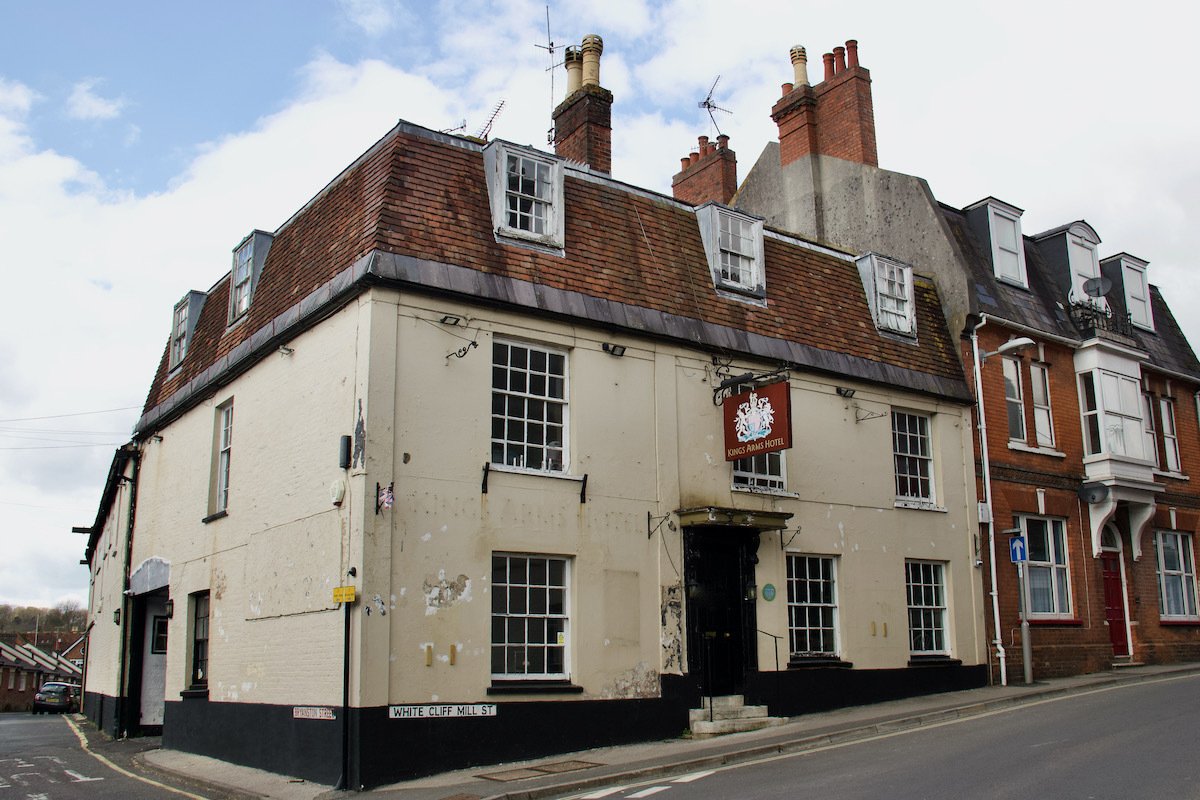
By seven o’clock that evening, the fire had burnt itself out. Only a few properties, roofed with tiles, were still standing. These included most of East Street, recently rebuilt in brick and tile after a fire there in 1713, Ryves Almshouses, a row of seventeenth century almshouses on Salisbury Street, and the Old House built around 1660. The Old House has survived three fires due to its isolated location in the town and the use of brick materials in its construction. Its unusual design features decorative, octagonal-shaped chimney pots, possibly added as a status symbol. Locally, the house is referred to as the German House, which is an indication that this residence was designed and built by German refugees fleeing from the effects of the Thirty Years War (a 17th century religious conflict fought mainly in central Europe). Two of those refugee families were wealthy and royally connected.
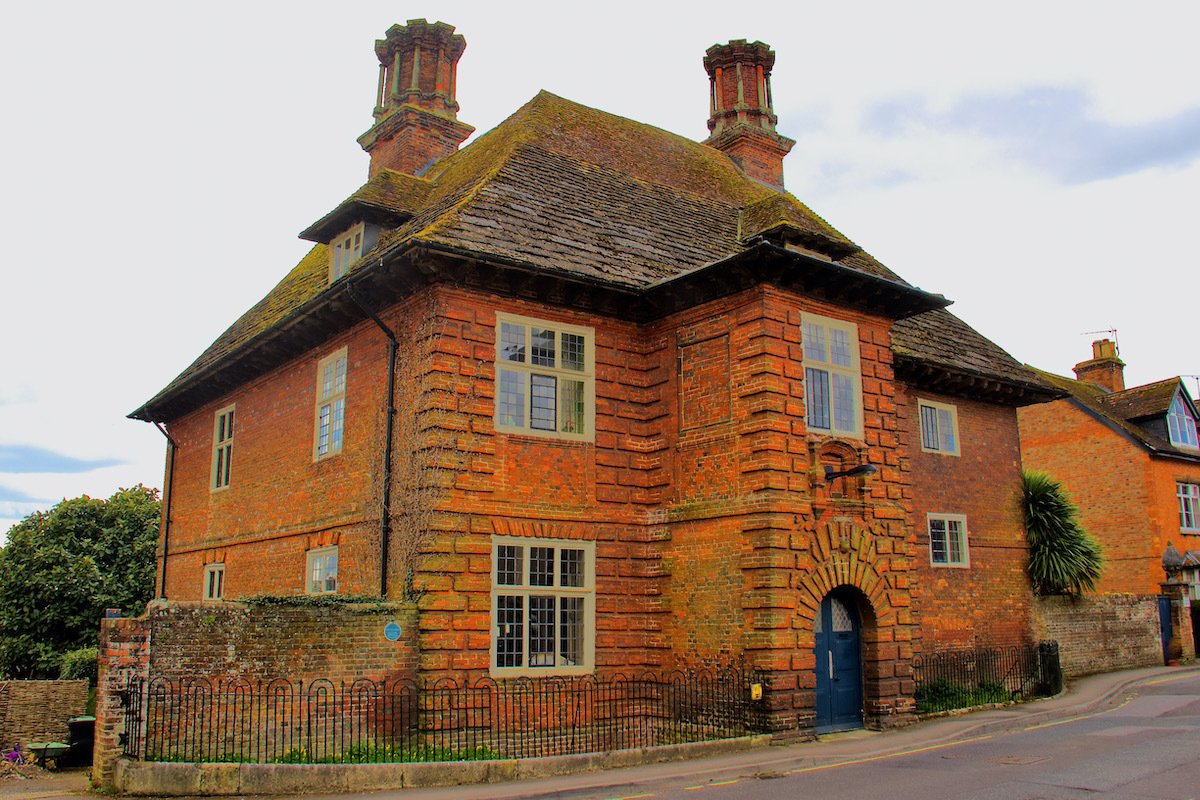
After the Great Fire of Blandford Forum
During the 18th century, town fires in Dorset were not unusual due to an abundance of buildings with thatched roofs. But this particular fire was quickly reported in the London newspapers thanks to the influence of wealthy landowners in the vicinity of the town, who had connections in London. The papers described the fire as a national disaster, prompting King George II, his Queen and the Prince of Wales to donate £1300 towards the rebuilding of the town. Charity-in-aid performances were held at the Drury Lane Theatre and a ‘brief’ was circulated around England, encouraging parish churches to collect money to help those who suffered in the fire. The final sum raised eventually covered nearly 30 per cent of the losses. In 1732, an Act of Parliament formalised the rebuilding of Blandford Forum. It was to be rebuilt in brick and tile, overseen by local gentlemen appointed to act as commissioners. The owners of property damaged in the fire had to start rebuilding within four years or the commissioners could give the property to someone else. The Commissioners also had the power to deal with disputes relating to land ownership and financial issues. The commission did not include any townsfolk, but local builders John and William B’stard were appointed to draw up a schedule of losses.
The B’stard Brothers of Blandford Forum
One of the casualties of the Great Fire was Thomas B’stard the head of a thriving family business in the centre of Blandford Forum. He did not die in the blaze but died a month later. He was among those who “either through the Labour and Fatigue, the Shocks and Surprizes of that Day, or by their Losses then sustained… or by the Methods taken since that Time to drown their Sorrows, are gone into another World.”
Two of Thomas’s sons, William and John inherited the business. Their workshop had been destroyed in the fire, but they were soon back in business, encouraged by the prospect of a lot of work coming their way. It is not clear if they were operating as general builders before the fire, but there is no doubt they took on this role after the fire. It is unlikely that they began designing buildings during the initial period of reconstruction but probably used contacts in the building trade to get designs for key buildings in the town from major architects. They probably used local designers for the larger houses and inns, such as the Greyhound Inn.
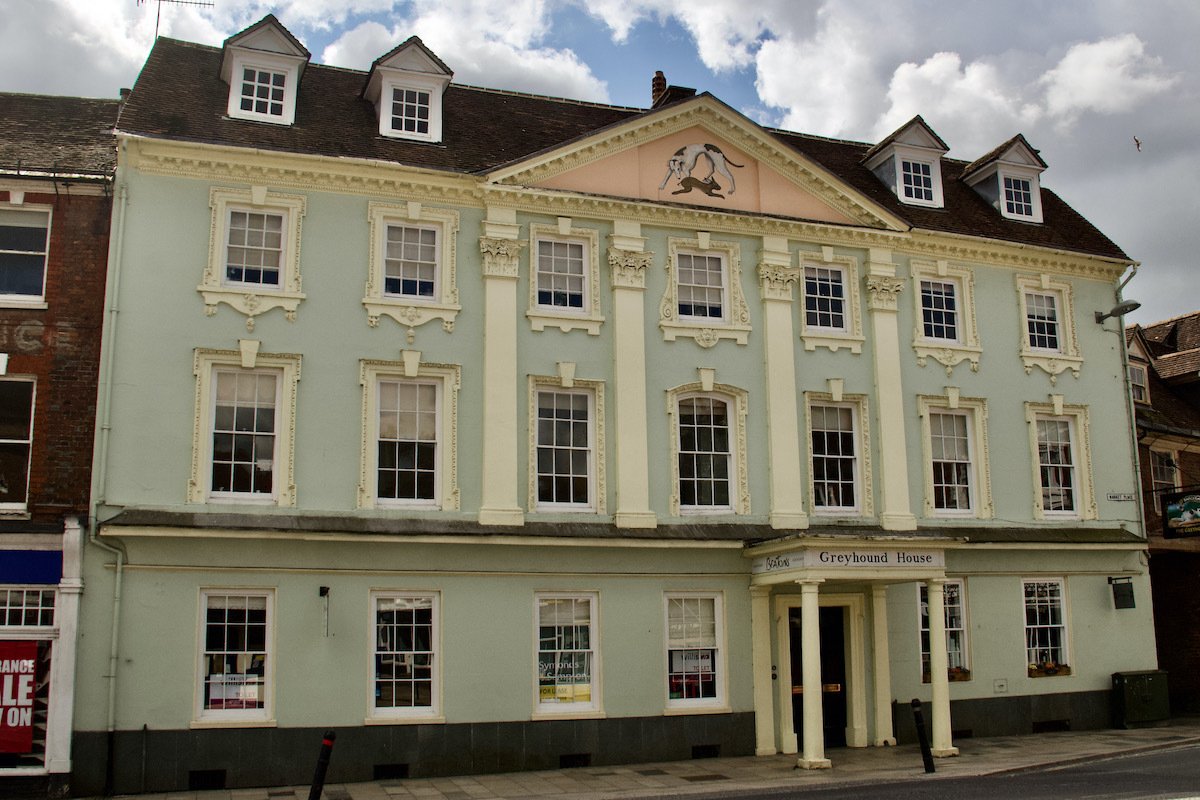
There is no doubt, either, that the brothers were able to assemble a workforce large enough to deal with the scale of building that was necessary in the few years following the fire. Visitors can enjoy their legacy to the town, now recognised as the most important small Georgian town in England including one of the few Georgian Churches outside London that is worth a visit – the church of St Paul and St Peter.
The Church of St Peter and St Paul
As the fire raged through Blandford Forum all the church records and valuable items were taken into the parish church located in the town centre. Churches were considered safe in the event of a fire, as they were built of stone with lead roofs. Minor fires did break out in the roof but were quickly put out, but not entirely. By two o’clock the following morning, a fire was seen in the roof above the nave. No ladders were available to get up to the fire as all the fire engines, ladders and fire buckets were busy elsewhere. As the fire spread through the roof the lead melted. A cascade of molten lead and stonework meant the building could not be saved. The church that stands there now, the church of Saint Peter and Saint Paul, was designed and built by John and William B’stard between 1732 and 1739. Originally, this Grade 1 listed building was to be topped by a spire, but funds ran out before it could be added. Instead, the iconic cupola was added in 1758. Despite the lack of a spire, the church is probably the best example of a classical Georgian church outside London. When it was rebuilt, the churchyard was enlarged, Salisbury Street and East Street were widened. The Market Place was cleared of buildings and the Town Hall re-sited to the north side of the Market Place – all terms of the 1732 Act of Parliament.
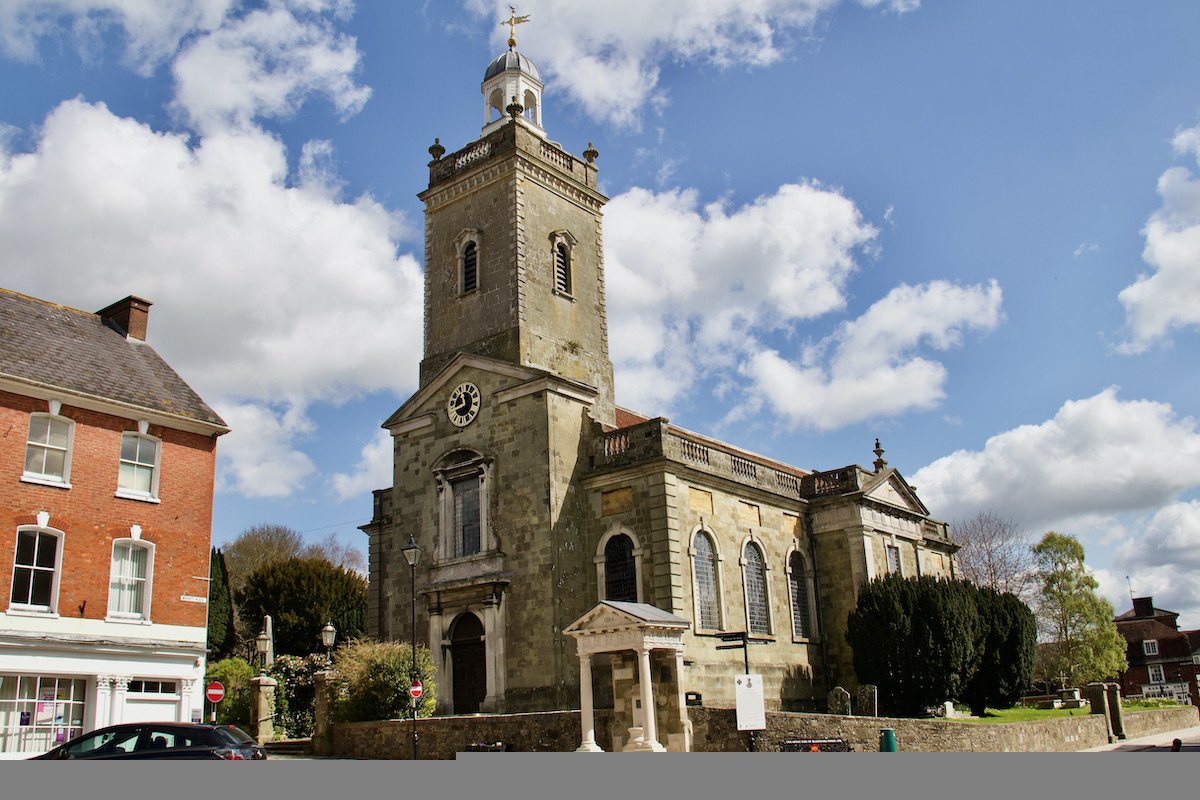
The Market Place
John and William B’stard were also responsible for the most important buildings in the Market Place today – the Town Hall incorporating the Shambles and Corn Exchange (for £197), the Greyhound Inn (cost £785), and their own flamboyant house (for £704). The Town Hall, a Grade 1 listed building, features columns, cornices and pediments. The open portico on the ground floor was formerly a market. Today, regular markets take place in the large ground floor room inside the building. On the first floor the front room retains some of the original fittings and displays some portraits of the B’stards. The back room on this floor is the old corn exchange. A corn exchange is a building where corn merchants once traded corn and they were found in most towns, but as the corn trade became centralised these historic buildings were used for other purposes. This one in Blandford Forum is available to hire for private functions.
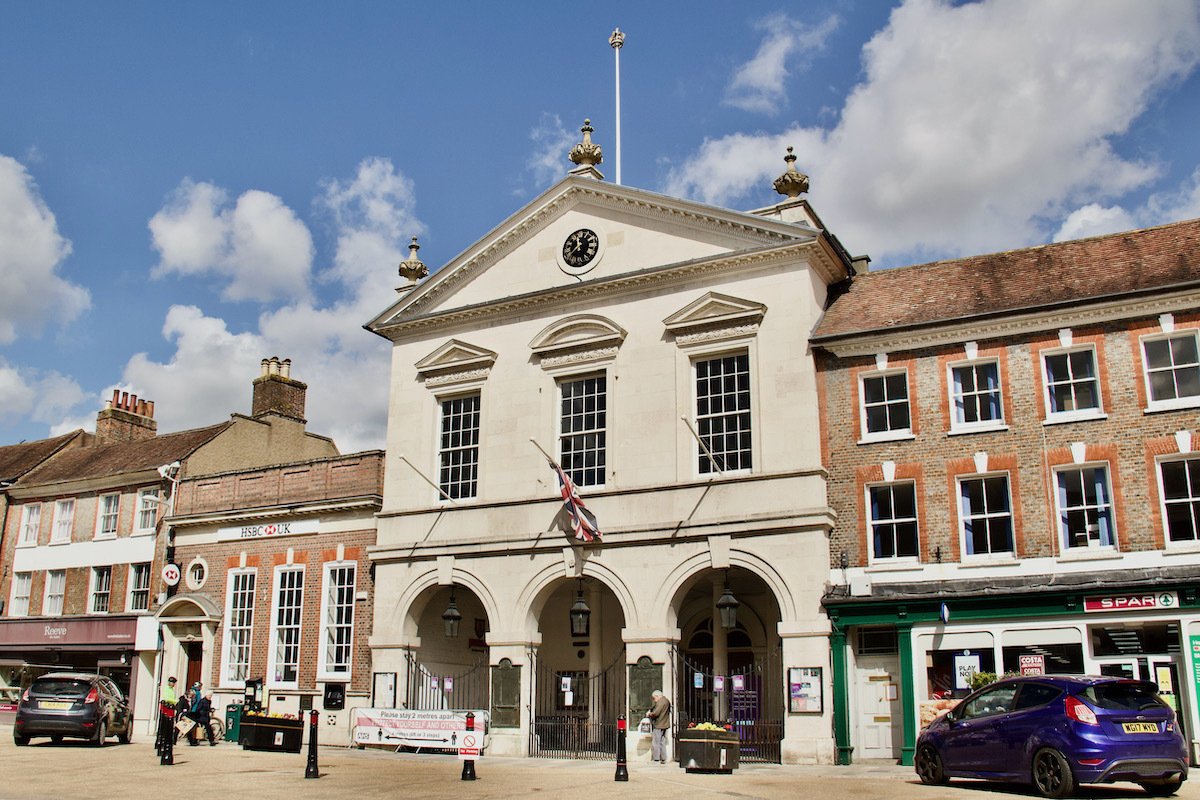
At the end of the Market Place opposite the church is a building that reflects the quality of the B’stards’ work. Although this property, originally three houses, resembles a coaching inn it was actually the home of the brothers. They had leased the property prior to the fire, and after it was destroyed, they came to an agreement with the owner whereby it became their permanent residence following its glorious restoration. Great care was taken over the detail of this building – classical style with hints of Baroque. Neither of the brothers ever married, and they lived here together. Not far from the Market Place is another property that was built by the brothers, Lime Tree House.
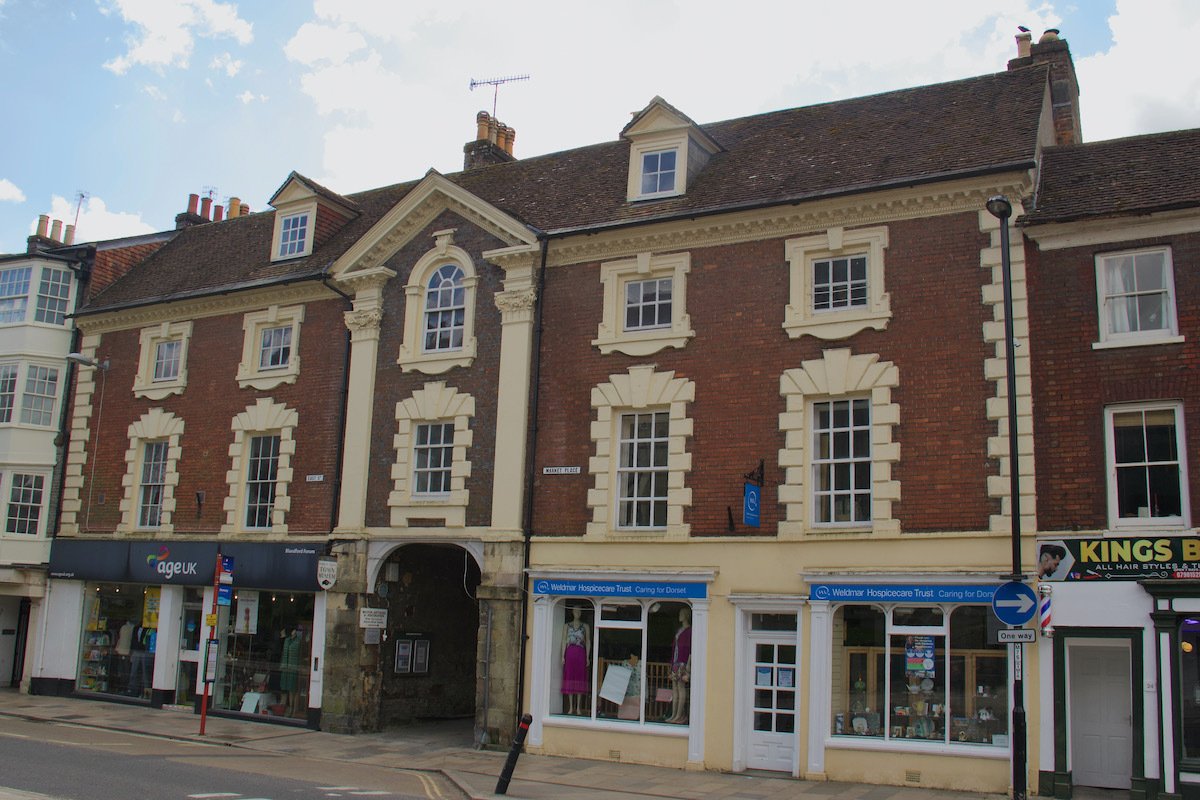
Lime Tree House
This typical, well-proportioned Georgian house was bought to house Mrs Penny’s collection of historic costumes, which developed into the Blandford Fashion Museum. Although the original building has been extended, it retains many original features including a fine oak staircase. This fascinating exhibition is managed and run by volunteers assisted and advised by a professional conservator and a costume historian. Exhibitions are changed on a regular basis and care is taken to ensure that the displays cover a range of historical periods.
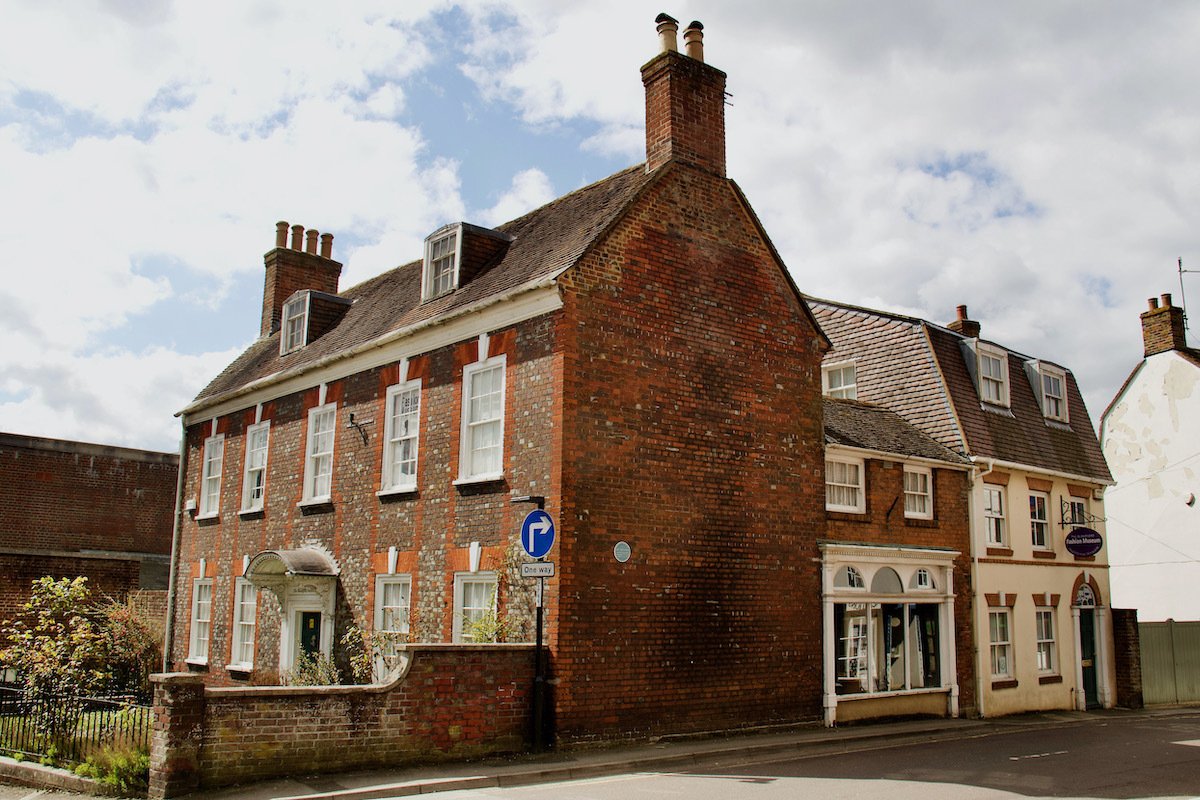
Apart from the buildings there are other memorials to the rescue operation undertaken by the B’stard brothers in Blandford Forum. These range from plaques and paving stones to exhibits in the Town Museum.
Memorials to the Rebirth of Blandford Forum after the Great Fire
At the side of the parish church is the Grade 1 Listed Fire Memorial which was erected there by John B’stard in memory of the Great Fire. It was built using Purbeck Stone and comprises four Roman Doric columns topped by a stone canopy. It illustrates the brothers’ more severe classical style. The original pump in this memorial or pump room was replaced by a fountain in 1897. Various plaques and inscriptions adorn the interior of the Fire Memorial.
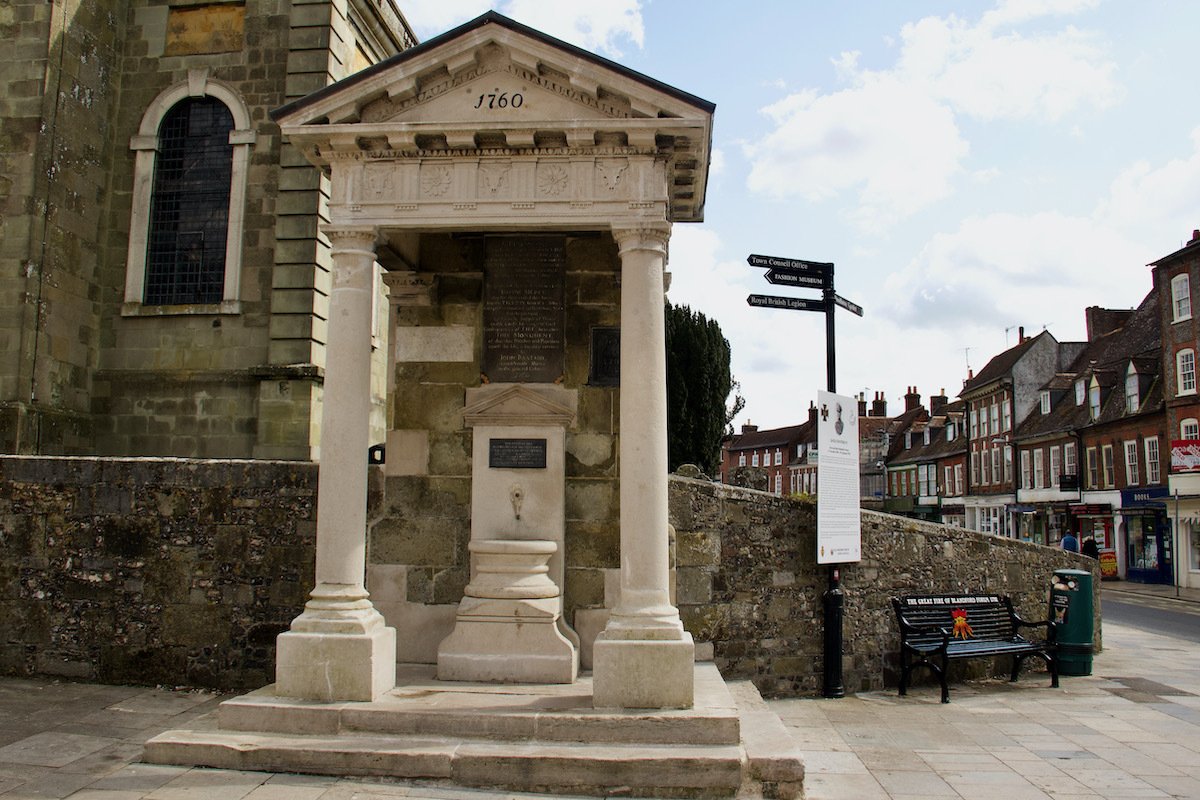
A recent memorial is a Purbeck paving stone in front of the Town Hall. The inscription reads:
‘Recipe for regeneration
take one careless
tallow chandler and
two ingenious Bastards’
It was placed here by the Blandford Poetry Group to celebrate the millennium. Sadly, it has perpetuated the erroneous spelling and pronunciation of the brothers’ surname.
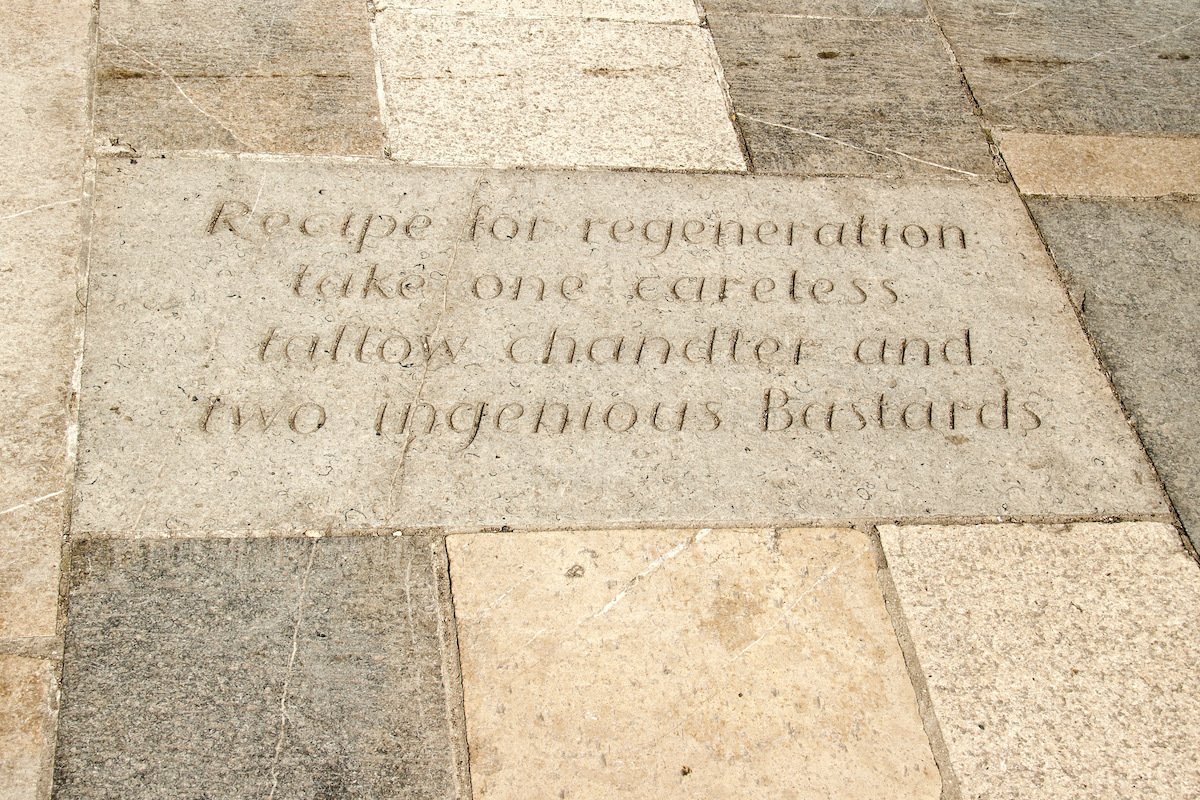
The quaint Town Museum is a treasure trove of information about the fire and the history of the local area. It occupies the Coach House in Bere’s Yard, behind the house once occupied by the B’stard brothers and was once a part of that property. The premises include a shop, a model railway of the former Blandford Forum Station (which was closed during the 1960s) and an authentic Victorian Garden.
Blandford Forum has many reasons to be thankful for the talents of the B’stard brothers who re-created a thriving market town.
